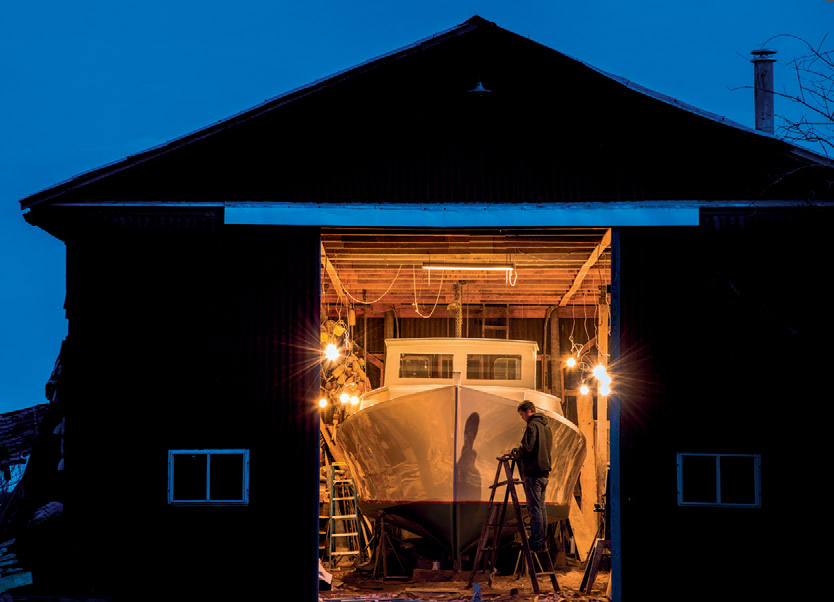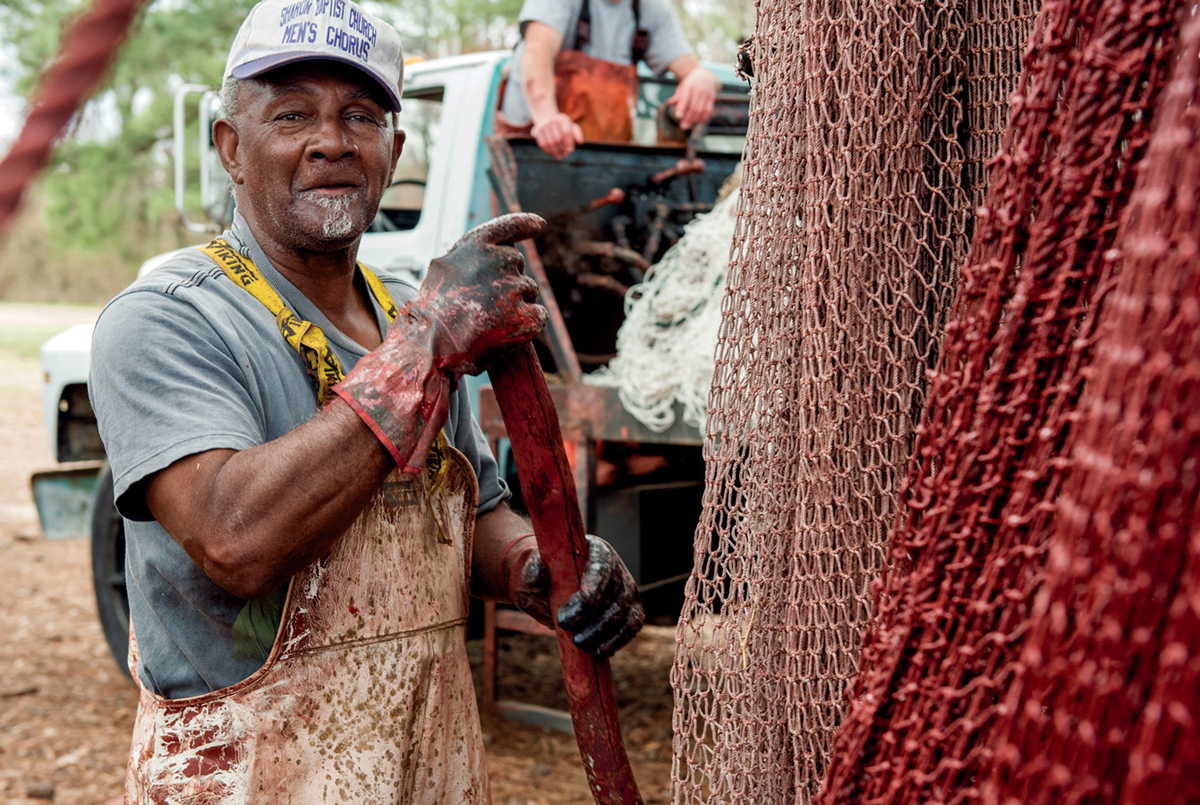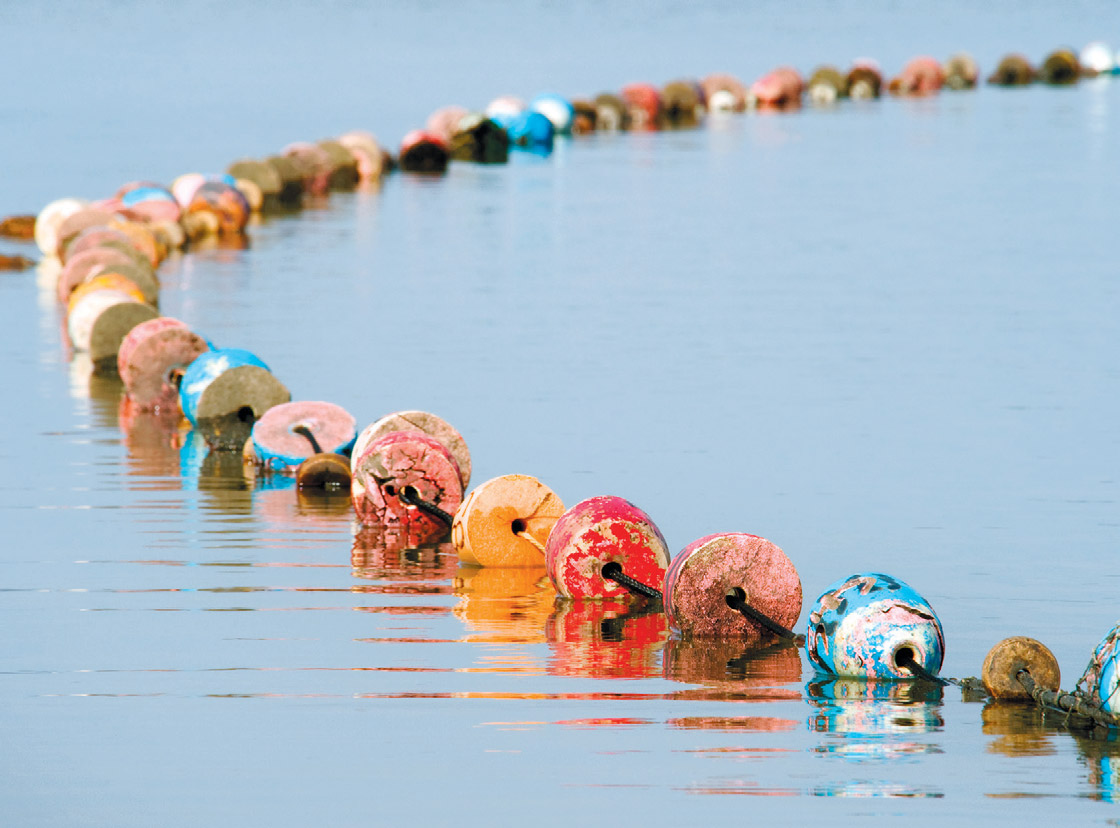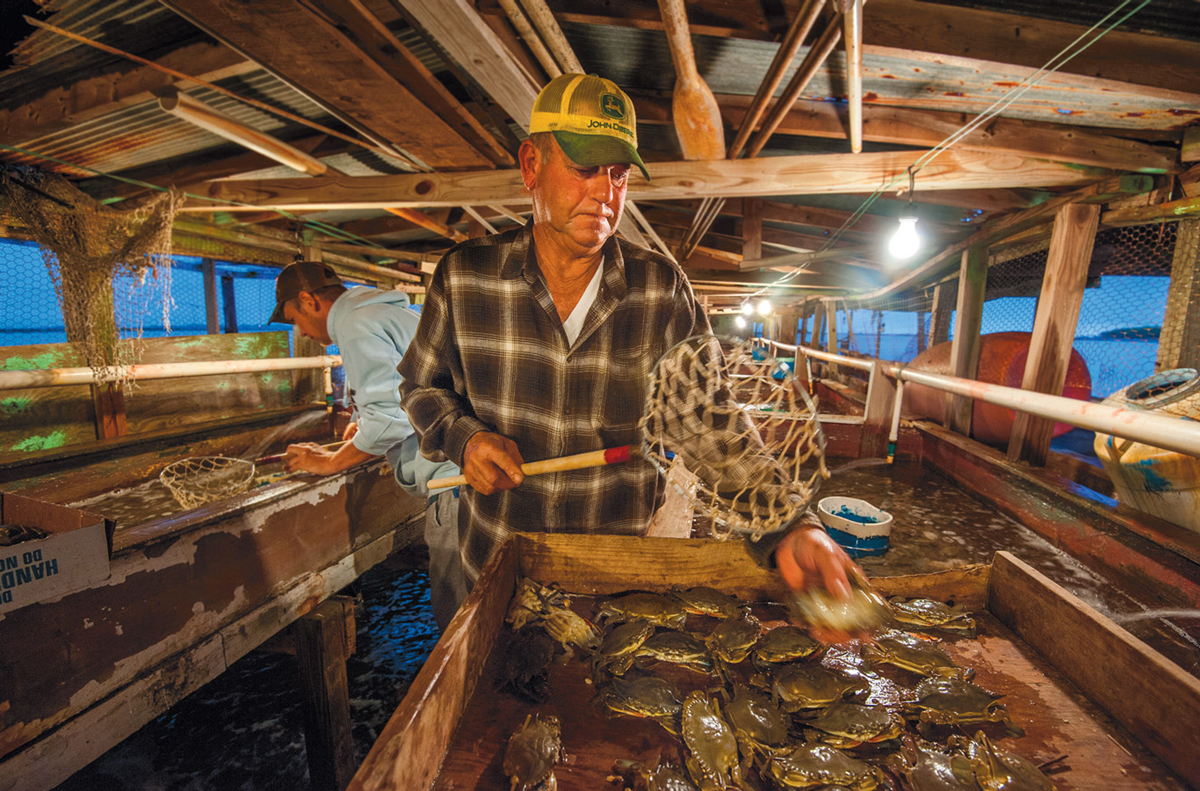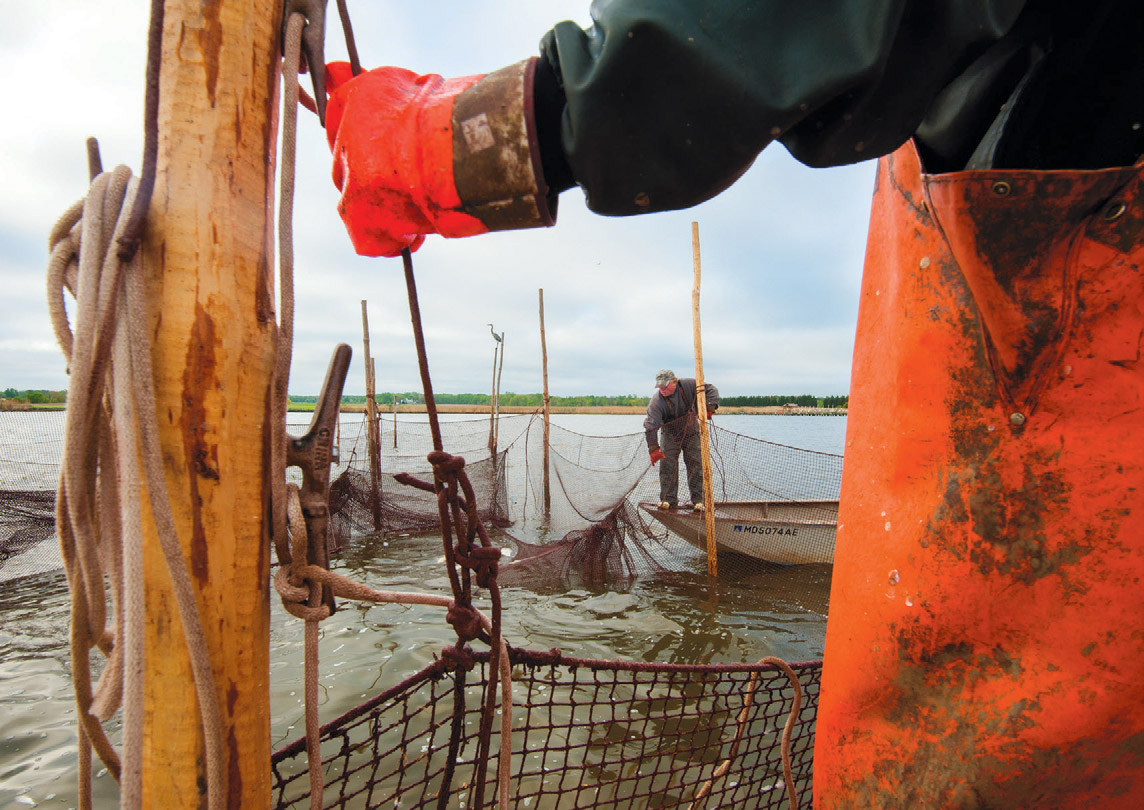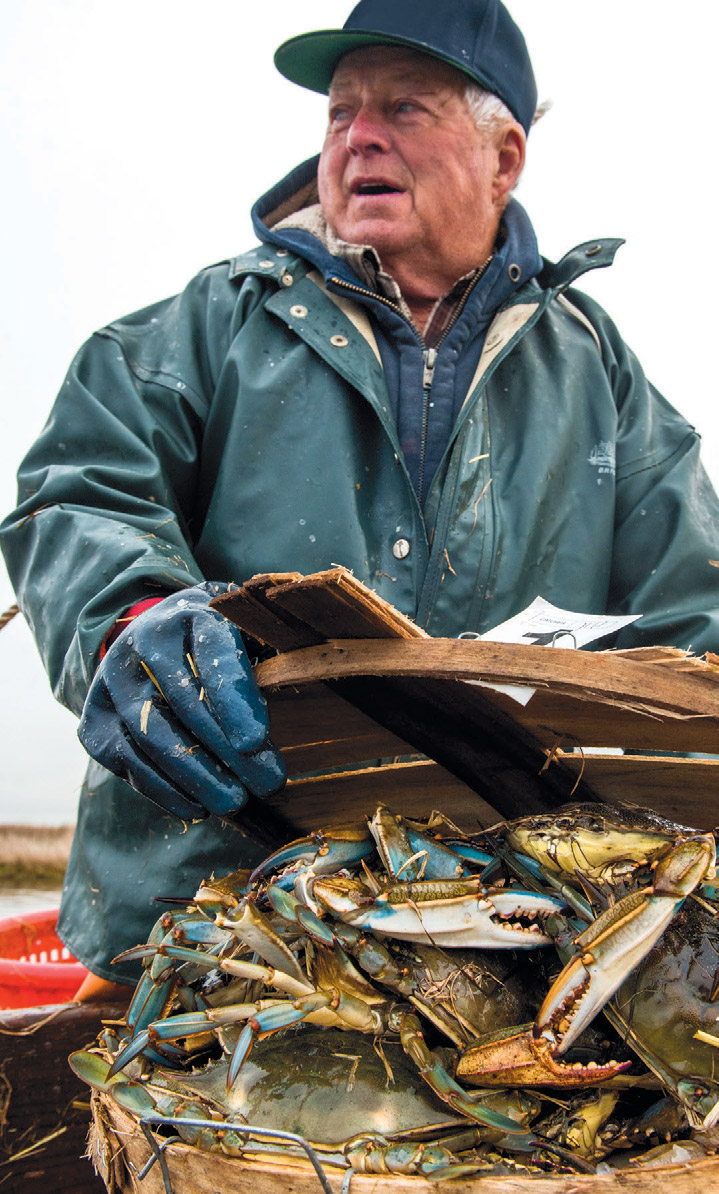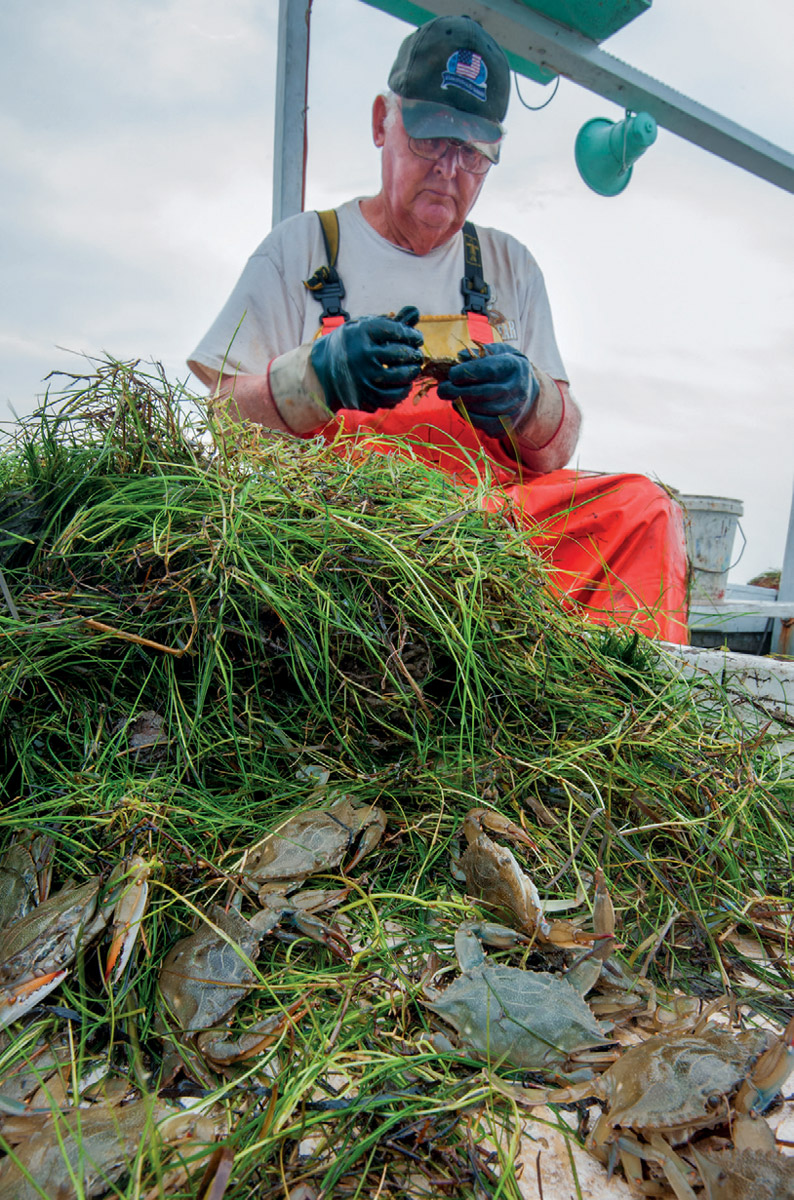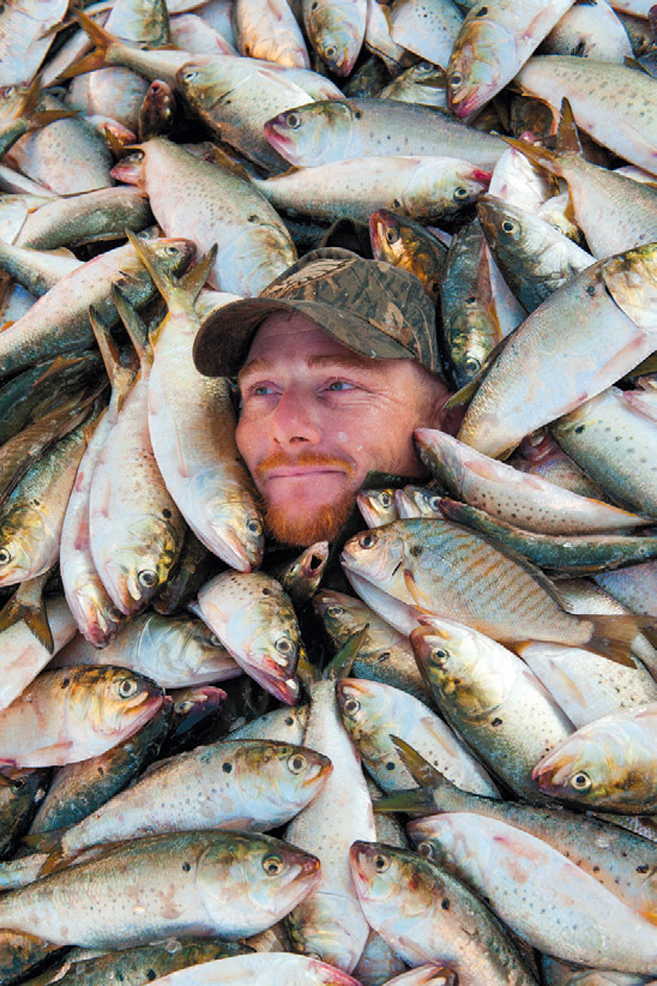Edible Delmarva
Capturing the Chesapeake: Photographer Jay Fleming
Photo by Mike Morgan
Photo by Jay Fleming
Boats used to work the water are in need of nearly constant upkeep. Most modern workboats are constructed from wood, fiberglass and epoxy resin. Lucas Littlepage, Crocheron, Maryland.
Photo by Jay Fleming
Watermen spend months preparing pound netting gear for the spring season. Poke James, Reedville, Virginia
Photo by Jay Fleming
Haul seine nets, ranging from 900 to 1800 feet, are set in a semi-circle against the shore to catch blue catfish, common carp, and gizzard shad preparing to spawn in spring. Nets are then pulled in by hand. Buoys floating a haul seine net. Choptank River, Maryland
Photo by Jay Fleming
“Peeler” crabs ready to shed are kept in nearby floats so watermen can harvest them within 1-2 hours of shedding and prepare them for market. Russ Smith, Tylerton, Maryland
Photo by Jay Fleming
Pound netting poles are driven deep into the bay floor to anchor nets that await the early run of fish from the ocean into the Bay. John Grussing, Jr. and Dickey Manning, Jr., Chestertown, Maryland
Photo by Jay Fleming
Working the Water, by Jay Fleming published 2016 by Fleming Creative Firm, Annapolis, Maryland. Order online at www.jayflemingphotography.com
Photo by Jay Fleming
Bank trapping, permitted in limited areas, uses a lead and trap to catch blue crab as they move with the tide, harvesting a mix of hard shell crabs and “peelers” that are ready to shed. Sonny Benton, Wenona, Maryland
Photo by Jay Fleming
During crab scraping, a metal dredge is pulled though grassy beds in shallow water to harvest prized soft shell blue crabs, which are then sorted according to where they are in the shedding process. Morris Marsh, Smith Island, Maryland
Photo by Jay Fleming
Pound nets deliver the first run of fish in the spring, Atlantic menhaden, or “bunker,” a plentiful fish that supplies the bait market along the entire Eastern seaboard. Hoopers Island, Maryland.
Photo by Jay Fleming
In late winter, Fyke nets are set along the shorelines, in the tidal portions of the rivers and creeks, to intercept spawning perch in the early spring. Logan and Ryan Manning, Chester River, Maryland


